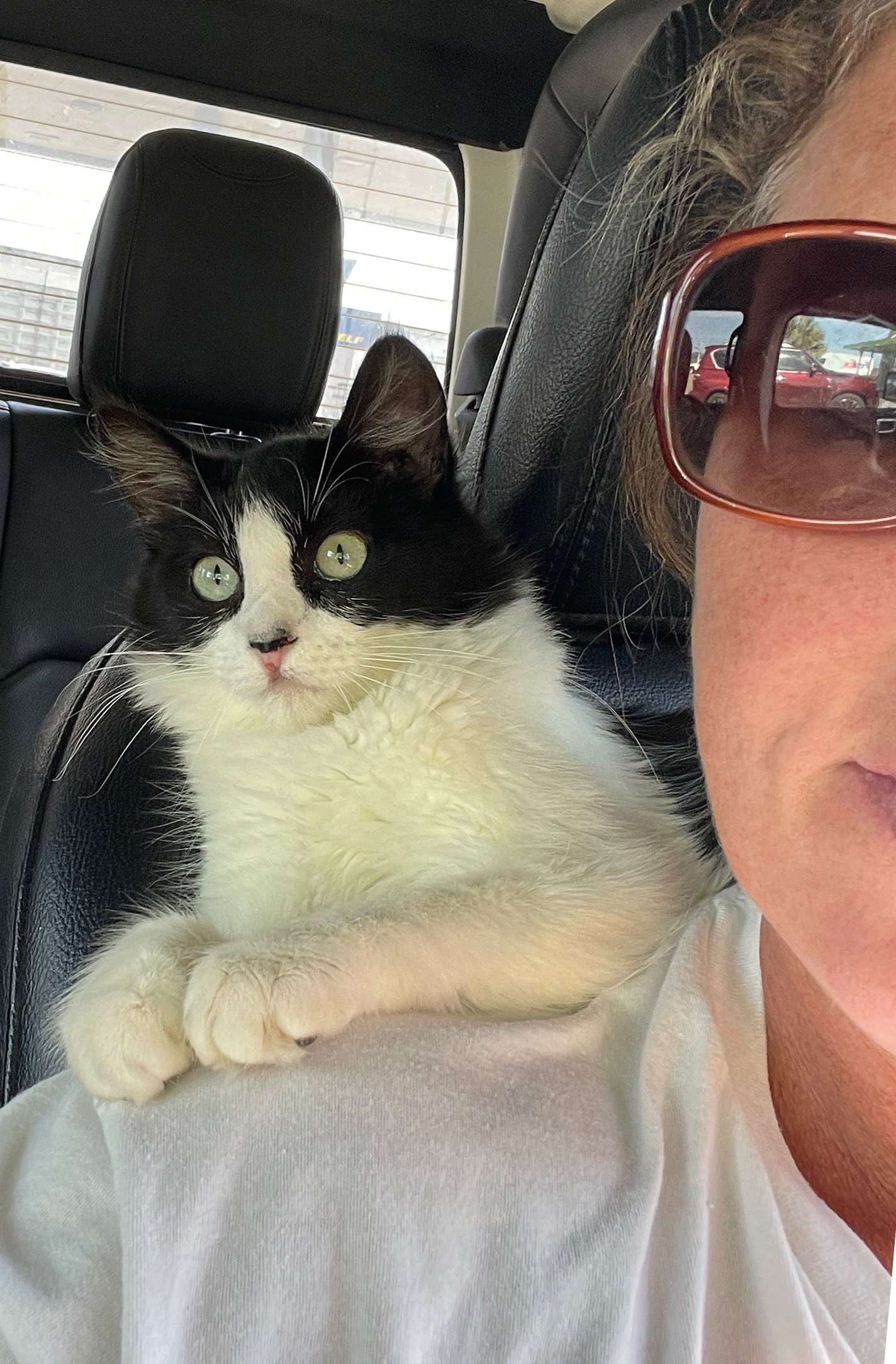What you need to know about Cerebellar Hypoplasia (CH)
Captain Jack and his CH journey as an adorably wobbly cat!
Captain Jack is one of the older kittens coming to Almost Home Cat Rescue from south Texas, through the Texas Cat Coalition. We partnered with these awesome rescuers in the Lone Star State to help them with lack of space in their overcrowded shelters, and also to take some special needs kitties that would otherwise be euthanized. Captain Jack is simply the sweetest masked tuxedo kitty you will ever meet - with a wobbly story to tell!
This gentle boy was found wandering outside alone, lost and confused. He was taken to a rural shelter in Texas where he was set to be euthanized. TCC stepped in to save his life and contacted AHCR to help. He is deaf and has Cerebellar Hypoplasia (CH), but none of that stops him one bit!
What is Cerebellar Hypoplasia?
CH is one of the most prevalent neurological conditions in cats. It is commonly passed to kittens in utero by a mother cat that is malnourished or that is infected with the panleukopenia virus. CH is also known as wobbly cat syndrome, because the cerebellum is affected. This is the part of the brain that controls motor coordination. Because kitties with this condition have an underdeveloped cerebellum, they have varying degrees of lack of coordination and balance.
Kittens born with CH will typically present symptoms at about 2-3 weeks of age as they start to become mobile. Common symptoms are jerky, uncoordinated walking, a wide-based stance, mild head tremors at rest, and more noticeable tremors when a kitty tires to make an intentional movement such as playing, eating, or drinking. Typical cases make CH kitties appear “clumsy” and they might need to lean on things for support. In more severe cases, kitties may help navigating the litter box or they may need gentle support to eat or drink. For more details, PetMD has a full list of symptoms and other information about CH here.
How do cats become infected with Panleukopenia?
According to the American Veterinary Medical Association (AVMA), the feline panleukopenia virus is everywhere in the environment, and vaccination is the best way to protect cats and kittens. Infected cats shed the virus in urine, stool and nasal secretions and transmit the virus to other cats that come in contact with these substances. Fleas can also pass the virus from cat to cat. The shedding period is quite short, only on one two days, but the virus is very resilient and can live in the environment for up to one year. This can make transmission also possible just from a cat being in an infected environment.
Vaccinations and preventing CH
It is important to recognize that while CH is not treatable, it is completely preventable with vaccinations and good nutrition. The core vaccine FVRCP can protect cats and kittens from this virus with a short series of shots. It immunizes them against many harmful viruses including the panleukopenia virus, a member of the parvovirus family. In all cats and kittens, this virus attacks the rapidly dividing cells of the host. In adult cats these rapidly dividing cells are found in the intestines, bone marrow, and lymph nodes. This typically causes immune system suppression, lethargy, fever, and GI issues. If a pregnant cat is infected with panleukopenia, the virus attacks the rapidly dividing cells of kittens in the womb differently. Because the most rapidly dividing cells of kittens in utero are their neurological cells, the virus attacks here and halts the development of the area in the brain that controls motor skills and coordination. This is what causes kittens born with CH to wobble. Fortunately, Researchers and Scientists have learned that all of this can be prevented with simple vaccinations! So please vaccinate your fur babies!
How do I care for a kitty with CH?
CH can be very mild or severe, but the great news is that the condition is nonprogressive, which means it does not get worse over time. CH is not painful and it is not contagious, and kitties with this condition just have a different “normal” state in which they live. In fact, CH kitties will adapt to their individual condition well and actually appear better over time as they learn to navigate their world! They tend to live normal lifespans, provided they get a little extra TLC to have a great quality of life as happy wobbly kitties!
Captain Jack enjoying a car ride!
Captain Jack is one of our best ambassadors, and he is helping us to educate folks on the positive impact of vaccinations through his amazing journey. In Captain Jack’s world, he does not jump but he will climb like a monkey to get up on a couch, which is cute and amazing to watch. It is recommended that his nails remain untrimmed so he can keep better traction on carpets and soft surfaces. Minimizing slippery and hard surfaces in his home is also recommended. He does not really like to be held, but he absolutely adores playing and chasing wand toys! Captain Jack’s CH is considered mild and he does not need any special care for his condition. His symptoms present as a wobbly head that never really stops moving, and he swerves a little when he walks. He can use the litter box and eat and drink on his own just fine. He can run and wrestle with his kitty buddies and he just loves being a silly kitten!
Come meet Captain Jack on July 1st, and see if you are a good fit to give him his perfect forever home!


